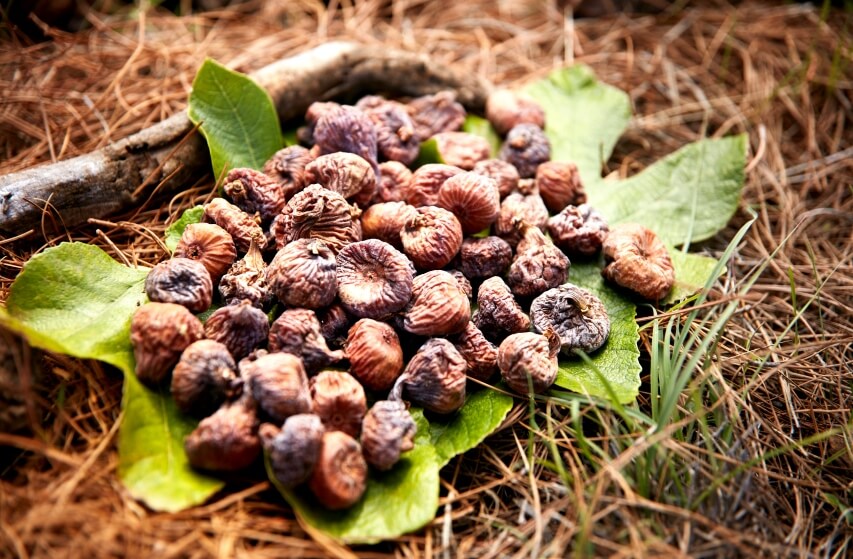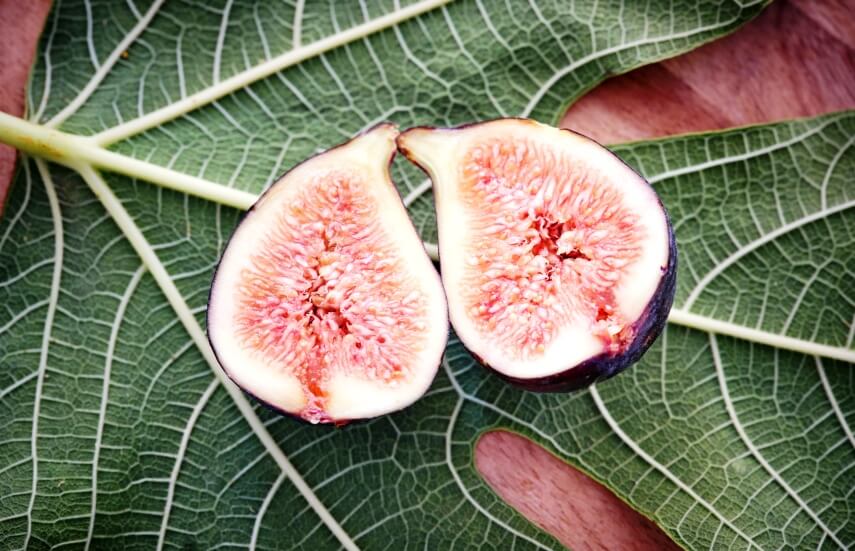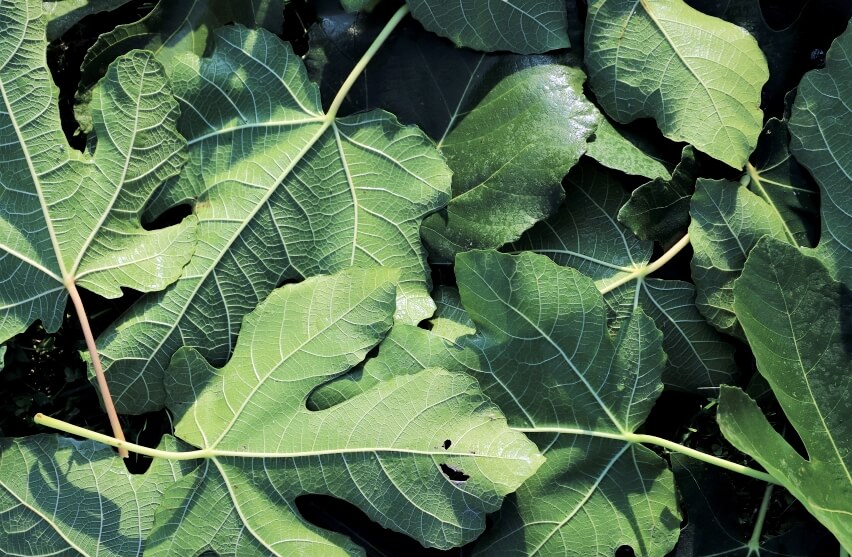Figs have a distinct, sweet flavor, a soft and chewy texture and are packed with edible, somewhat crunchy seeds. Since figs are sweet and healthy, they are frequently dried to preserve them.
Most people are aware of the health benefits of figs. Still, they are unaware that fig leaves are also beneficial and can be eaten. Fig leaves are rich in nutrients and have many health advantages. This article will review fig leaf benefits, nutrition, and how to add it to your diet.
If you are interested in plant benefits, you can also read
<<Sunflower Benefits>> and <<English ivy Benefits>> articles.
Fig Leaf Benefits
Fig leaf benefits are numerous. Fig leaves are high in fiber and have various minerals and vitamins. Some of the Beneficial nutrients included in fig leaves are calcium, iron, phosphorsus, manganese, sodium, potassium, vitamin A, vitamin B1, and vitamin B2.
Nutrients in fig leaves are the source of their numerous health benefits. Some of the health benefits of fig leaves are as below:
Controlling Diabetes
Fig leaf has anti-diabetic properties, which aid in regulating blood sugar levels. It assists in reducing the dosage of insulin needed for diabetic patients.
According to studies, fig leaf decoction has a positive effect on patients with type 1 diabetes. Diabetes patients can have Fig leaf tea in the morning with breakfast daily.
However, before consuming fig leaves, it’s crucial to speak with a doctor because, depending on how well the medication works, the patient might require less insulin.
Decreasing Triglyceride
In addition to having anti-diabetic effects, fig leaves have also been demonstrated to reduce triglyceride levels in the body.
Triglycerides are necessary for good health and bodily function, but excessive amounts dramatically increase the risk of obesity and heart disease. Frequent fig leaf eating may reduce triglyceride levels and prevent health hazards [1].
Good For Wrinkles And Skin Cancer
Human melanoma cells are phototoxic by fig leaves’ antioxidant activity. It has been discovered that some varieties of fig leaves are a fantastic source of treatment for specific forms of skin cancers [2].
Another fig leaf benefit is that it is good for wrinkles. Research on the effectiveness of fig leaves for wrinkles has yielded positive results. The antioxidants in fig leaf are what give it its success rate.
Additionally, it has been discovered that the anti-collagenase activity of fig leaves substantially impacts freckles and wrinkles on human skin.
Good For Bones
Fig leaves’ high calcium content strengthens bones and lowers the risk of bone resorption. Their phosphorus content also stimulates the formation of new bone and starts the healing process for damaged bone [3].
Preventing & Easing Constipation
The high fiber content of fig leaves helps regulate bowel motions and prevents constipation. Fiber also prevents constipation, diarrhea, and uncomfortable bowel movements [4].
Help Weight Loss
The fiber in fig leaves can help people lose weight. Consuming A few fig leaves can provide the recommended daily nutrients. To determine the proper dosage, it is best to consult an expert.
Antimicrobial Effect
Due to its antibacterial characteristics, fig leaf tea is an excellent natural cure for preventing the growth of dangerous pathogenic bacteria like Staphylococcus aureus, Escherichia coli, and Pseudomonas [5].
Treating Male Infertility
Male infertility can be treated with the use of fig tree leaves. Melatonin, caffeoylmalic acid, manganese, and vitamin E are antioxidants that are available in fig leaves. These antioxidants can help the body produce more sperm [6].
Regulating Hyperlipidemia
High triglyceride and cholesterol levels in the blood are known as hyperlipidemia. Lipids accumulate in the blood vessel walls and obstruct blood flow, which might result in serious problems. One of the fig leaf tea benefits is that drinking fig leaf tea enhances your lipid profile and raises good cholesterol (HDL) [7].
Anti-Inflammatory Effect And Treating Fever
Fig leaf tea has a substantial anti-acute inflammatory effect due to the anti-inflammatory properties of its flavonoid-rich components. You can regularly consume this tea to reap all of fig leaf benefits [8].
The fig tree’s leaves are also helpful in treating fever since they possess a relaxing, antipyretic, and anti-inflammatory impact that lowers the body’s elevated temperature.
Fig Leaf Potential Side Effects
Fig leaves have been utilized for centuries due to their rich nutrient content and various health benefits. While these leaves are generally safe for consumption, it is essential to understand that, like any other natural substance, fig leaves may have potential side effects that need to be considered. Here, we provide insight into the possible side effects of consuming fig leaves.
Allergic Reactions
Some individuals may be allergic to fig leaves. Allergies can manifest as skin rashes, itching, hives, or even difficulty breathing. It is crucial to monitor your body’s response when consuming fig leaves for the first time and consult a healthcare professional if you suspect an allergic reaction [9, 10].
Gastrointestinal Issues
Fig leaves can have a mild laxative effect due to their high fiber content. While this can be beneficial for promoting regular bowel movements and combating constipation, excessive consumption can lead to diarrhea, bloating, or abdominal discomfort. It is essential to moderate your fig leaf intake to avoid potential digestive issues [11].
Hypoglycemia
Fig leaves have been traditionally used to help regulate blood sugar levels in individuals with diabetes. However, if you are taking medications to lower blood sugar levels, consuming fig leaves in large quantities may cause hypoglycemia (low blood sugar). It is crucial to monitor blood glucose levels regularly and seek medical advice on appropriate fig leaf consumption if you have diabetes or are taking anti-diabetic medications.
Allergic Reactions
Fig leaves contain certain compounds that may interact with specific medications. If you are taking medications for hypertension, blood thinners, or any other long-term medications, it is advisable to inform your healthcare provider about your fig leaf consumption. This precaution ensures they can assess any potential interaction and adjust your medication if necessary.
Unripe Fig Leaves
Unripe fig leaves possess a milky sap (latex) that may cause skin irritation or allergic reactions in some individuals. Therefore, it is essential to harvest and consume fully ripe fig leaves, as unripe leaves could lead to skin discomfort or adverse allergic reactions.
How to use fig leaves?
As mentioned above, Fig leaf benefits are numerous. Fig leaves have several uses and are nutrient-rich. Similar to grape leaves, fig leaves can be used as a wrap for dishes with rice, pork, fish, etc.
There are numerous ways to incorporate fig leaves into your diet, each with significant advantages. Here are several key methods to incorporate fig leaves into your diet [12]:
- Making a fig leaf tea: Just like ordinary tea, fresh and dry fig leaves can be brewed into tea. All you need to do is Fifteen minutes of boiling, then straining.
- You can also cook these leaves. Cooked fig leaves can be substituted for spinach greens by cooking them for 20 minutes in mildly salted water.
- Additionally, fig leaves can be utilized as a wrap. When wrapped and fried, the leaves give dishes a wonderful Mediterranean flavor. Rice, veggies, and fish can all be wrapped in fig leaves.
- You can also prepare a vegetable curry that contains large fig leaves. At the end of cooking, take the leaves out. The leaves add a nice flavor to the curry.
- Fig leaves can also be added to slow-cooked stews or soups as a spinach substitute.
How To Make Fig leaf Tea?
One of the best ways to reap fig leaf benefits is to consume it in the form of tea. Three or four fresh or dried leaves, a tea kettle, water, and a teacup are required to make fig leaf tea. After preparing the ingredient and equipment, all you need to do is to take the following steps to take advantage of fig leaf tea benefits:
- Carefully remove the stems from three to four fig leaves, either fresh or dried.
- Crush the leaves and pour them into a tea kettle with 1/2 cup of water.
- Once the tea kettle has been on fire for 10 to 12 minutes, pour the tea into a cup and serve.
Note: It is advised to use gloves when handling the fig leaves rather than your bare hands.














